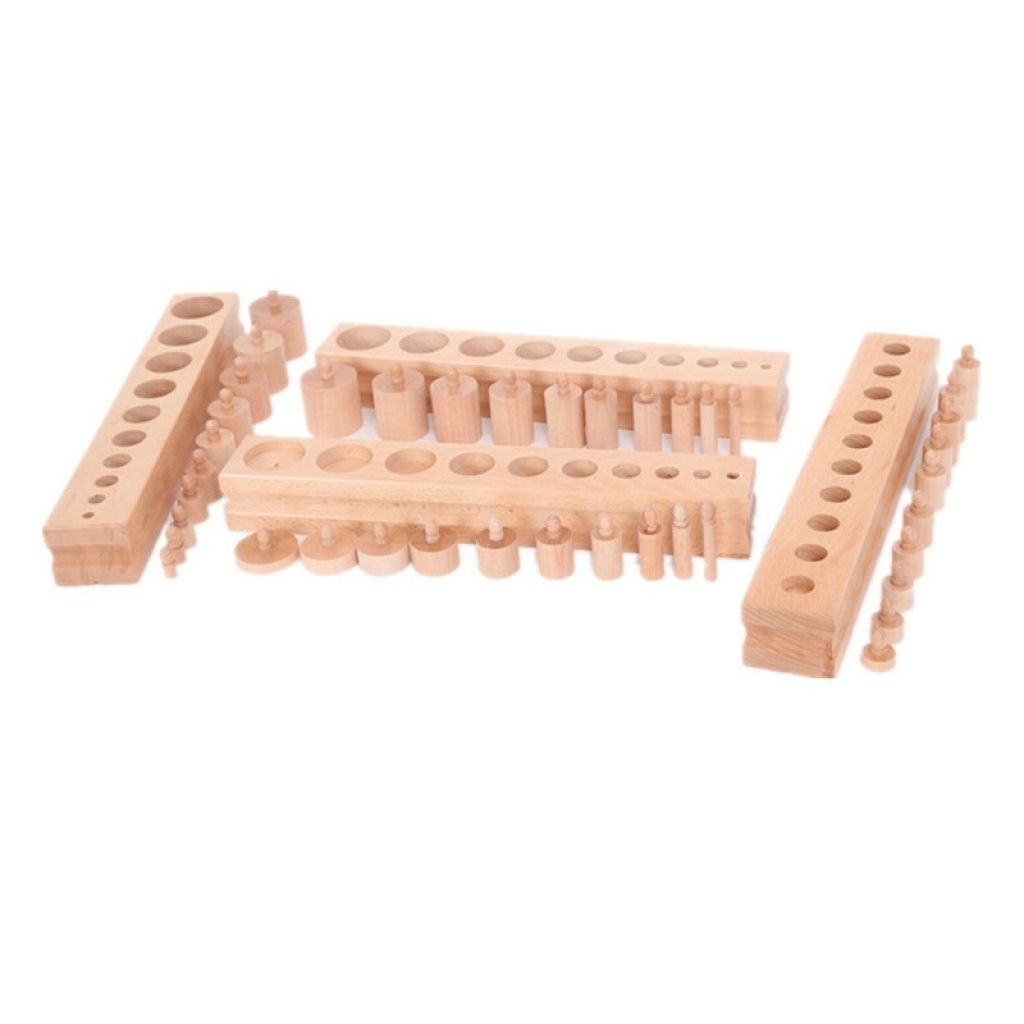
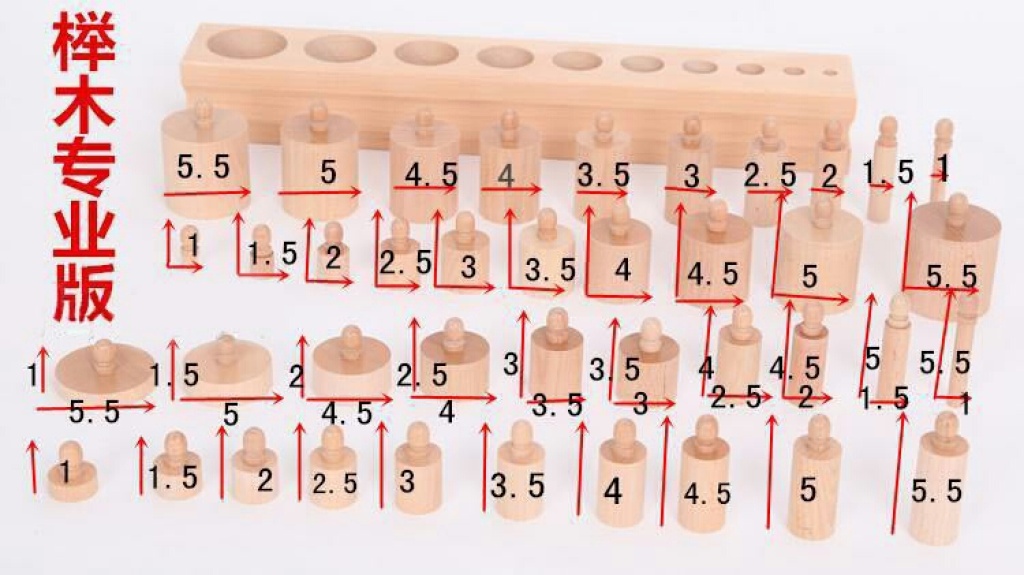
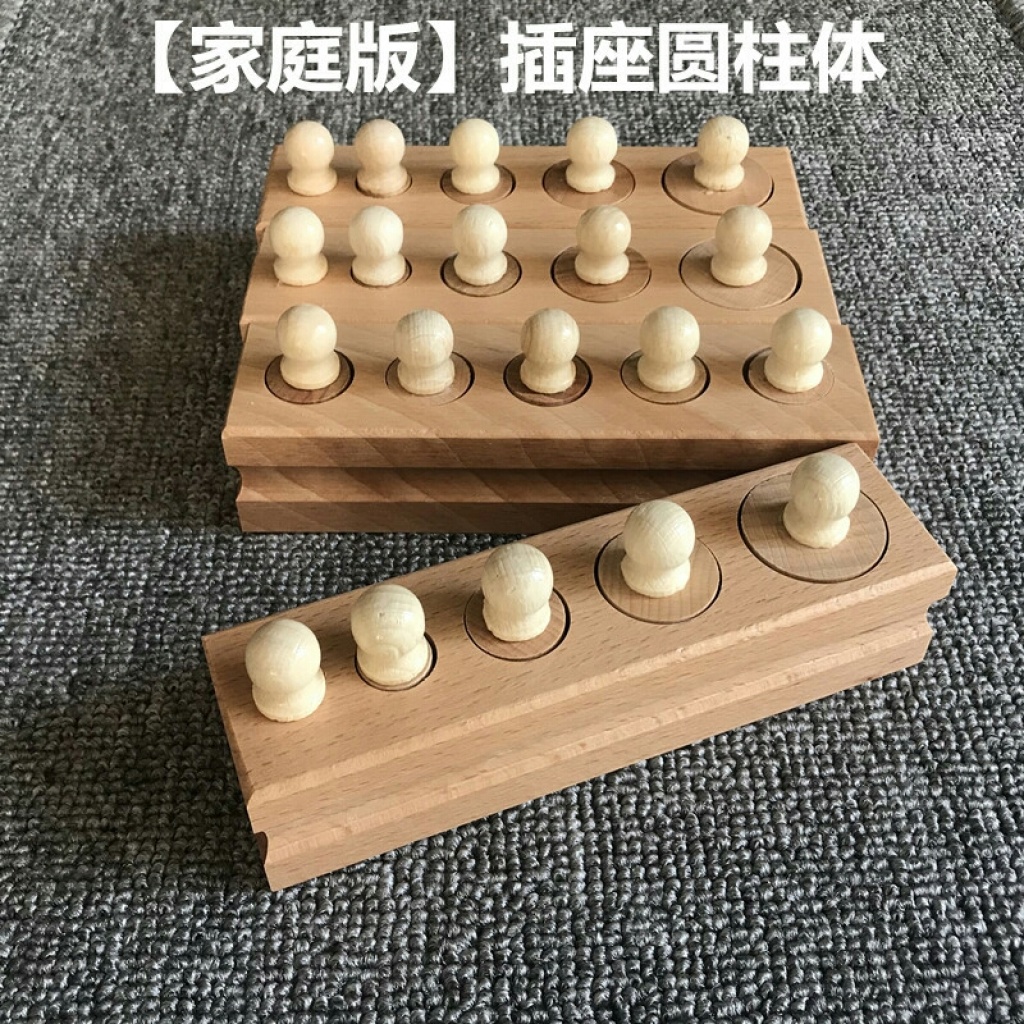
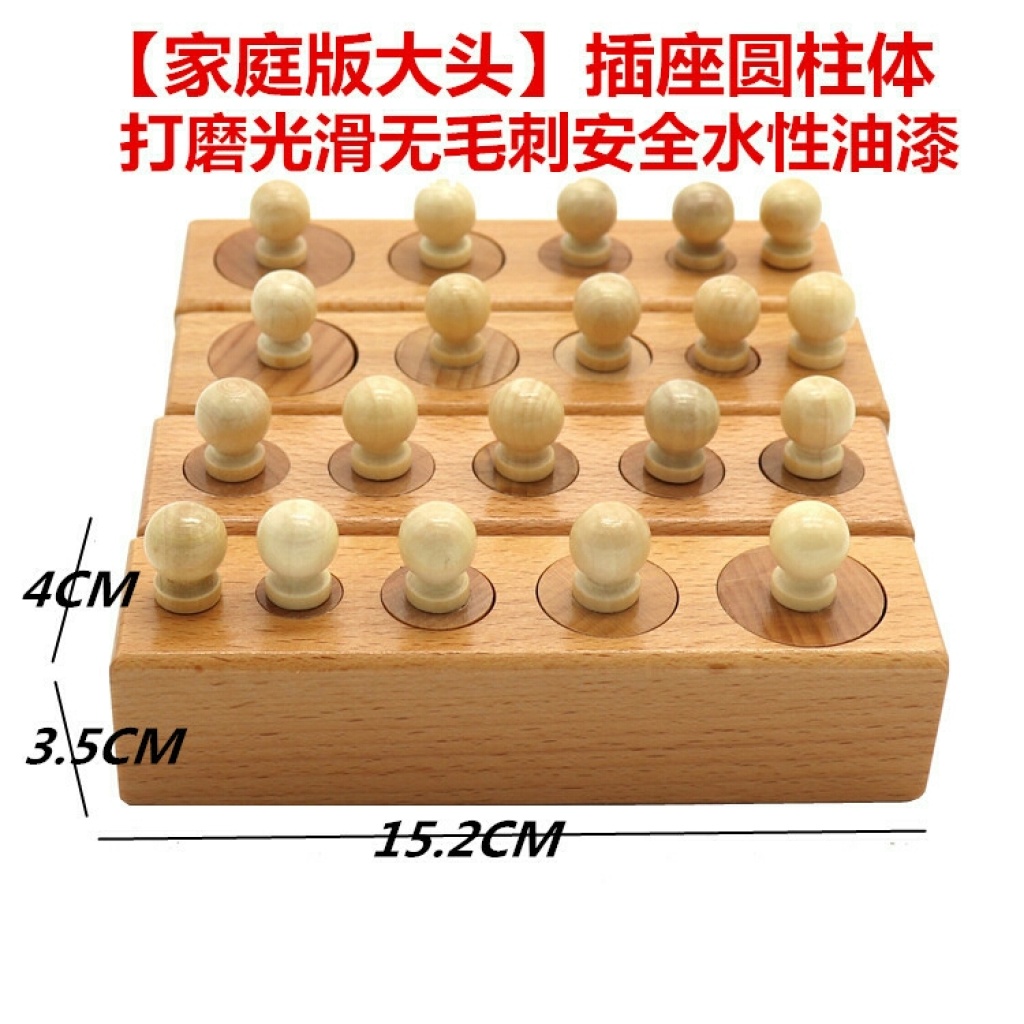
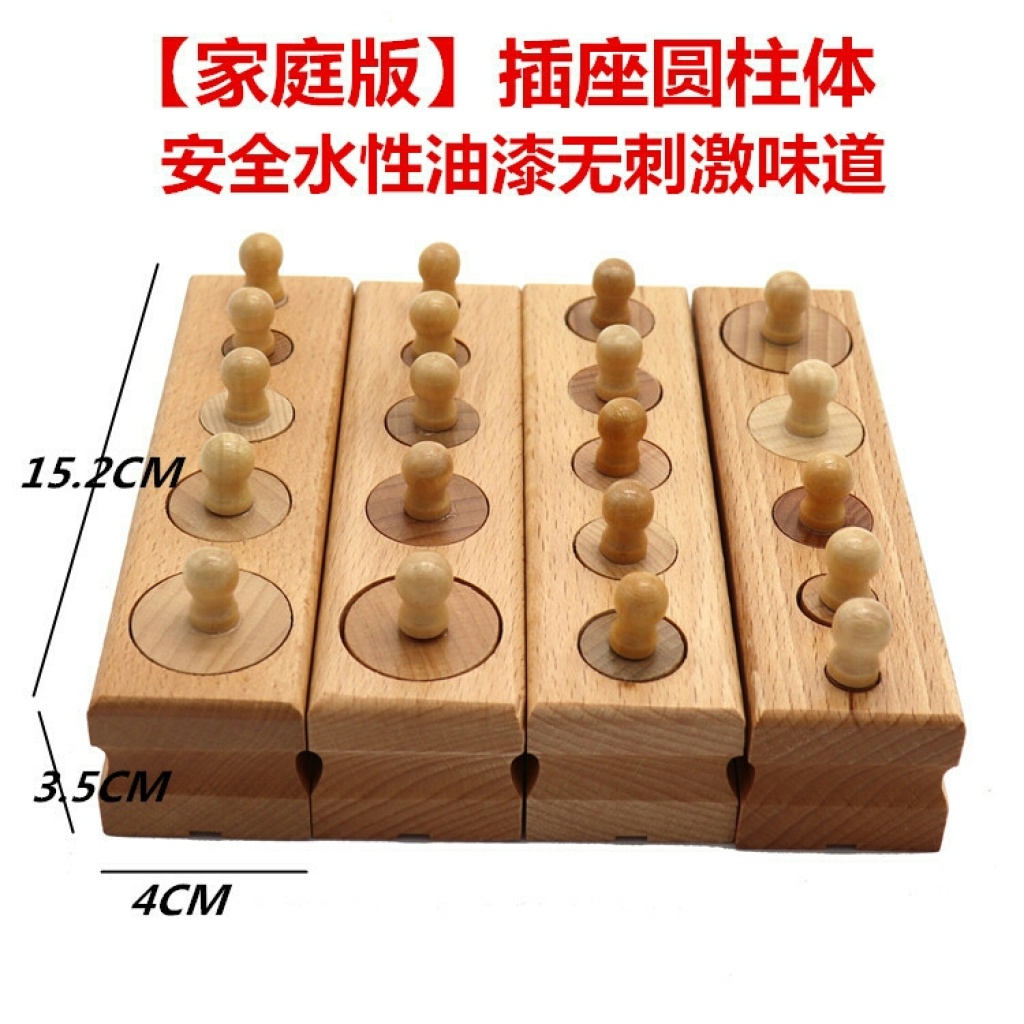
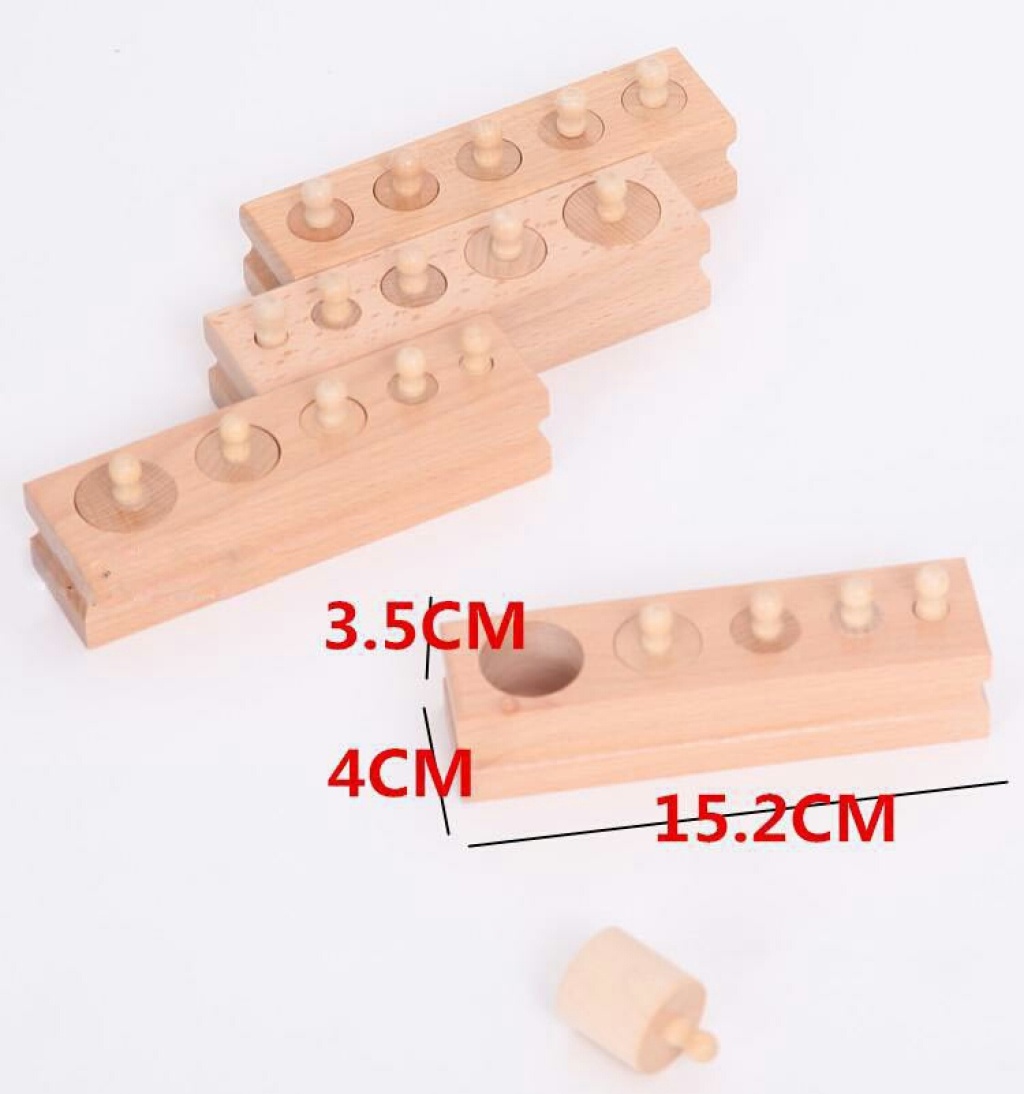
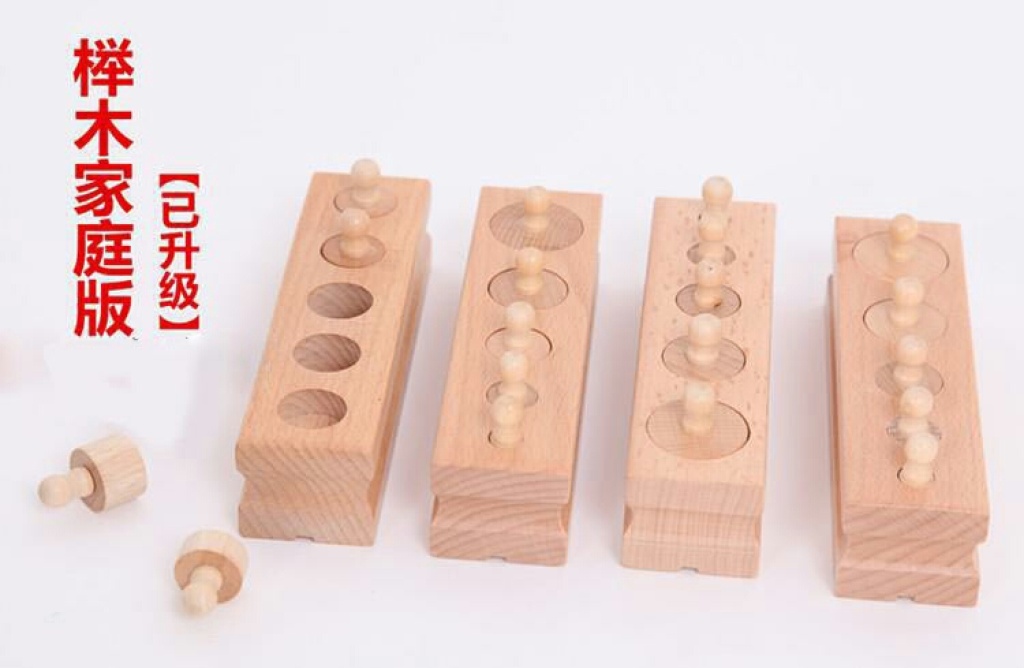
Product Name: Socket Cylinder
Packing: White Box
Professional Edition Specification: 47.5*29.5*10CM (Box Size)
Professional Edition Size: 47*7*6CM/group (four groups)
Family Edition Specification: 17*16*5.2CM (Shipping Box Size)
Family version size: 15.2*4*3.5CM/group (four groups)
Material: Solid Wood (Beechwood)
The socket cylinder is designed to cultivate young children's ability to observe and distinguish objects by size and dimension with their vision, and to begin to learn how to practice. Among the sensory teaching aids, the one that most attracts 2-3-year-old children is the socket cylinder.
教具
The socket cylinder has four groups (A/B/C/D), which are similar to timber, with (ten round holes for the professional version) and (five round holes for the family version) and a small cylindrical handle connected to it.
Suitable for ages
For children over 2.5 years old, the ticket is valid upon entry.
direct purpose
1. Cultivate the ability of young children to distinguish sizes and dimensions visually, and let them learn how to practice.
2. Exercise the ability of young children to control small muscle movements, hand-eye coordination, and flexibility.
3. Develop their language skills and accurately use vocabulary.
Indirect Purpose
1. Educate young children to discover and correct mistakes.
2. Assist children in concentrating and stimulate their willingness to repeat operations.
3. Cultivate children's concentration, sense of order, and observation skills.
Basic Operations
Operation 1: The Matching Exercise for Cylinders (Using Group A as an Example)
1. Recommend work to young children, introduce the name slowly and clearly, guide the children to take the work blanket together, and determine the work position.
2. When taking the socket cylinder, demonstrate the method of holding the teaching tool: spread the thumbs of both hands, and close the rest of the fingers, holding the two ends of the cylinder, and clamping the arms tightly. If the force is insufficient, hold it in your arms.
3. Sit on the side of the child's dominant hand, which is usually the child's right side.
4. The cylinder is arranged from thick to thin, from left to right in a regular pattern.
5. Start from the left, hold the round handle with three fingers and gently pull it up, place it in front of the socket, and then remove the remaining cylinders in no particular order.
6. Pick up a cylinder, flip it over so that the bottom is facing up, and place it close to the hole to compare. Use your eyes to observe if they are the same, and gently insert and try.
If it is incorrect, slowly move from left to right until you find the same round hole.
8. Move slowly and simply, without any language interference.
After placing all ten cylinders, please let the children try it. If they are interested, you can introduce practice in time.
10. After work is completed, return the teaching aids to the shelf and return the work blanket to its original location.
The operation methods for cylinders B and C are the same.
Operation Two: Special D Group Practice
1. Preparations are as above.
2. Remove the cylinders without any order, pick up one cylinder and approach the hole, use vision to observe and compare the height of the cylinder with the depth of the hole.
3. Use the index finger and middle finger of the other hand to rotate the cylinder, perceiving the length through muscle sensation, then rotate the cylinder along the inner side of the hole, to assist in locating the same hole, gently insert the cylinder.
4. Check the surface of the round seat visually or feel it with your hands to see if it is flat.
5. If it is incorrect, slowly move from left to right until you find the same round hole.
Operation Three: Three-Stage Naming Practice (Taking Group A as an Example)
1. The leading work is as above.
2. Remove the cylinders in order and arrange them, take the two most contrasting cylinders, and perform the naming exercise. The names are: thick and thin.
3. Practice exercises in a three-stage teaching method.
Phase 1 (Naming)
Introduction: This is thick, thick; guide children to imitate, observe, and feel by touching it in their hands. This is thin, thin. (The method is the same)
Phase Two (Recognition)
Please identify which one is thick? Which one is thin? (Please give me the thick one, please hide the thin one). Quietly change the position and identify again.
The third stage (pronunciation)
Please ask the young children to express themselves in language: What is that like? What is that like?
Once the children have mastered the skill, the gap between the two cylinders can be gradually reduced to guide the children to practice repeatedly until they can distinguish the difference in thickness between adjacent cylinders.
The operation method of cylinder B group is the same, and the name is: tall and thick, short and thin.
The operation method of the cylinder group C is the same, and the name is: thick and short, thin and tall.
The operation methods for cylinder group D are the same, and the name is: High and Short (Low).
Operation Four: Sequential Practice with Cylinders (Example for Group A)
1. The leading work is as above.
2. Remove the cylinders without any order and ask the children to observe carefully to find the largest one. Place it aside, and then find the next largest one from the remaining cylinders. Arrange them from left to right in order.
3. After all the cylinders are sorted, confirm them in descending order and embed them into the holes in turn.
4. If it is incorrect, remove and re-sort, try again.
5. When the child becomes proficient, reverse the order can be practiced.
Group B, C, and D of the cylinder operation methods are the same.
More quantity, more discount, welcome to consult!








 Product Name: Socket Cylinder
Product Name: Socket Cylinder